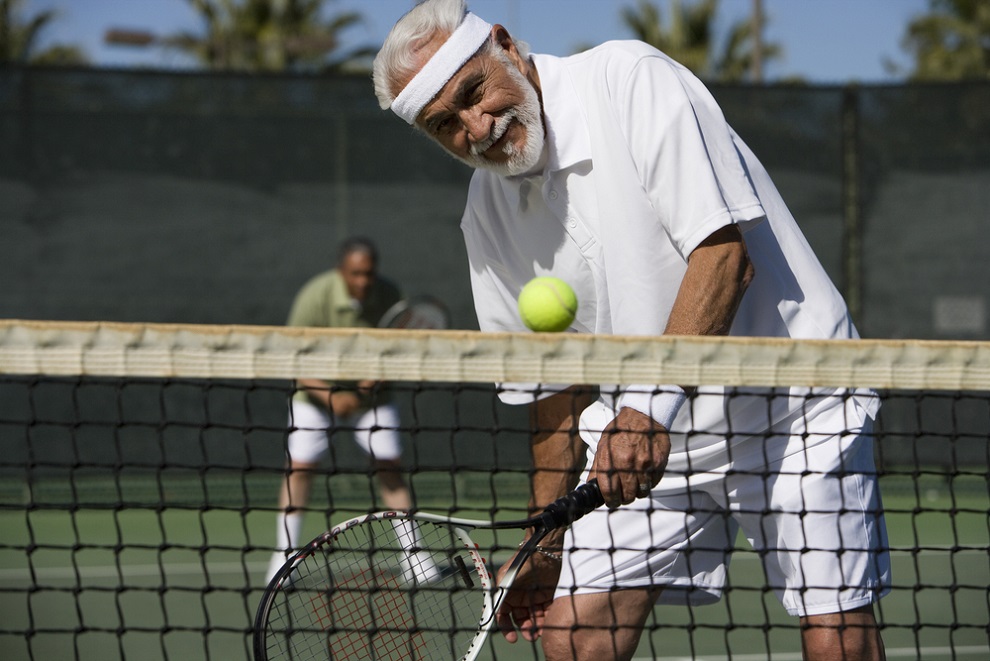The psoas muscle—often overlooked yet crucial to our everyday movement—plays a pivotal role in stabilizing the spine, supporting proper posture, and facilitating fluid motion in the hips. Understanding its anatomy and function is essential for maintaining overall musculoskeletal health.
Whether you're an athlete striving for peak performance or seeking relief from chronic lower back pain, empowering yourself with knowledge about the psoas muscle can lead to profound improvements in your physical well-being.
That's why, in this article, we explore the significance of the psoas muscle, common issues associated with its weakness, methods for assessment, and a range of exercise and lifestyle practices to strengthen and optimize its function.

Anatomy of the Psoas Muscle
The psoas muscle—consisting of the psoas major and minor—resides deep within the abdomen. Specifically, it originates from the lumbar vertebrae (T12-L5) and extends through the pelvis to attach to the femur.
This expansive location makes it challenging to isolate the psoas but illustrates just how important it is to your movement and stability. Functionally, the psoas muscle plays a pivotal role in hip flexion by lifting the thigh towards the torso and bending the trunk forward. It also stabilizes the lumbar spine during activities such as walking, running, and standing by contributing to proper alignment and posture.
In terms of its relationship to other muscles and body structures, the psoas muscle is part of the broader hip flexor complex. This means it works synergistically with muscles like the iliacus, rectus femoris, and sartorius. It also shares fascial connections with the diaphragm, making breathing mechanics and core stability crucial.
Importance of a Strong Psoas Muscle
If your psoas muscle is imbalanced or dysfunctional, then you may be experiencing symptoms like lower back pain, hip stiffness, and compromised posture.
The Psoas Muscle's Impact On Posture
A strong psoas muscle is fundamental for maintaining proper posture and body alignment. As one of the primary hip flexors, it helps support the natural curvature of your spine, prevents slouching, and promotes an upright posture.
A well-functioning psoas muscle also contributes to pelvic stability, essential for maintaining alignment in the lumbar spine and reducing the risk of lower back pain.
The Psoas Muscle's Impact On Lower Back Health
As implied above, the psoas muscle's impact on lower back pain cannot be overstated. By stabilizing the lumbar spine and pelvis, a strong psoas muscle helps distribute forces evenly, thereby minimizing strain on the structures of your lower back.
Conversely, a weak or tight psoas muscle can lead to imbalances in the pelvis and contribute to conditions such as swayback posture or lumbar lordosis, both of which count chronic lower back pain as a symptom.
The Psoas Muscle's Impact On Athletic Performance
The strength and flexibility of the psoas muscle also directly influence athletic performance. A well-conditioned psoas muscle supports core stability and efficient movement mechanics to improve agility, speed, and athletic prowess. In activities that require explosive movements, such as sprinting or jumping, a strong psoas muscle enhances hip flexion and extension to facilitate powerful strides and leaps.
Practicing targeted exercises to strengthen the psoas muscle is especially beneficial for athletes wanting to optimize their performance and reduce the risk of hip and lower back instability injuries.

Common Issues And Symptoms Associated With a Weak Psoas
A weak psoas muscle can manifest in various ways, often leading to discomfort and limitations in daily activities. Here are a few of the most common issues and symptoms associated with a weak psoas muscle:
- Lower Back Pain And Stiffness: When the weakened psoas fails to support the lumbar spine adequately, the result is increased stress on the surrounding structures and lower back pain. Specifically, you might experience full achiness or sharp pains in the lower back region, especially after prolonged periods of sitting or physical activity.
- Hip Flexor Discomfort: Hip flexor tightness and discomfort are prevalent among those with a weak psoas muscle. As the primary hip flexor, the psoas can become tight and shortened due to a lack of strength and flexibility, leading to sensations of stiffness or pulling in the front of the hip joint. This tightness may exacerbate lower back pain and contribute to limited mobility in activities such as walking, climbing stairs, or performing deep squats.
- Bad Posture: Anterior pelvic tilt and exaggerated lumbar curvature are both common symptoms of a weak psoas muscle. These postural deviations alter the alignment of the spine and pelvis and potentially lead to muscle imbalances, joint dysfunction, and increased susceptibility to injury.
- Limited Range of Motion: A weak psoas muscle may limit your range of motion in your hips and pelvis. Specifically, difficulty in achieving full hip extension during activities like walking or running can impair overall mobility and compromise movement efficiency. Similarly, reduced hip flexion can hinder movements like lifting your knees towards your chest or performing deep lunges.
Recognizing the symptoms of a weak psoas muscle is essential for implementing targeted interventions that can address underlying weaknesses and restore optimal musculoskeletal function.
Exercises To Strengthen The Psoas Muscle
Integrating targeted exercises and mindful movement practices into your daily routine can help strengthen the psoas muscle and improve its function.
Here are a few exercises to get you started toward enhanced mobility, stability, and athletic performance:
Stretches For Flexibility
Standing Psoas Stretch
- Begin by standing upright with your feet hip-width apart.
- Take a step back with your right foot, but keep both feet facing forward.
- Engage your core and gently shift your weight forward, bending your left knee while keeping the right leg straight.
- Lean slightly forward and press the right hip forward until you feel a stretch along the front of the right hip.
- Hold for 20-30 seconds, then switch sides and repeat.
Lunges With A Twist
- Start in a standing position with feet hip-width apart.
- Take a step forward with your right foot, lowering into a lunge position until both knees are bent at 90-degree angles.
- As you lunge forward, twist your torso to the right, bringing your left elbow towards your right knee.
- Hold for a moment, then return to the starting position.
- Repeat on the opposite side, alternating sides for a total of 8-10 repetitions on each side.
Exercises For Strength
Psoas March
- Lie on your back with your knees bent and feet flat on the floor.
- Engage your core muscles and lift your right knee towards your chest, keeping the left foot on the ground.
- Hold this position for 5-10 seconds. You should feel a contraction in the psoas muscle.
- Slowly lower your right foot back to the floor and repeat with your left leg.
- Continue alternating legs for 8-10 repetitions on each side.
Leg Raises
- Lie on your back with your legs straight and arms by your sides.
- Engage your core and lift both legs off the ground, keeping them straight.
- Hold for a moment at the top, then slowly lower them back down towards the floor.
- Avoid arching your lower back and focus on using your abdominal muscles to control the movement.
- Aim for 10-12 repetitions, gradually increasing as you build strength.
Plank Variations
- Begin in a plank position: your elbows bent and forearms resting on the ground, and your body in a straight line from head to heels.
- Engage your core muscles, then lift one leg off the ground, keeping it straight and parallel to the floor.
- Hold for 10-15 seconds, then lower your leg and switch to the other side.
- To further challenge your psoas muscle, you can also lift one arm off the ground while maintaining the plank position.
- Aim for 3 sets of 8-10 repetitions on each side for both leg and arm variations.
Pro Tip: Incorporate psoas-strengthening exercises into your regular workout routine by including them in your warm-up or cool-down sessions. It's also important to focus on maintaining proper form and alignment during exercises like squats, lunges, and deadlifts so that you ensure engagement of the psoas muscle throughout your movements.
Lifestyle Factors For Psoas Health
1. Regular Movement And Activity
Regular movement and physical activity are essential for maintaining optimal psoas health. In addition to the simple exercises described above, activities such as walking, cycling, or yoga help to promote flexibility and strength in the psoas muscle.
We recommend aiming for at least 30 minutes of moderate-intensity exercise most days of the week to keep your muscles healthy and functional.
2. Proper Posture And Movement
Poor posture and prolonged sitting can contribute to tightness and weakness in the psoas muscle. To improve posture and reduce sedentary behavior, consider implementing ergonomic adjustments at your workstation, such as using a standing desk or ergonomic chair. Take regular breaks to stretch and move throughout the day, and focus on exercises that target the hip flexors and promote proper alignment.
3. Stress Management
Chronic stress can lead to increased muscle tension, including tightness in the psoas muscle. Incorporating stress management techniques such as deep breathing exercises, meditation, or yoga can help reduce tension and promote relaxation in the psoas and other muscles. And don't forget to prioritize self-care practices that support mental and emotional well-being to mitigate the effects of stress on muscle health.
4. Proper Hydration And Nutrition
Adequate hydration and proper nutrition are vital in supporting muscle recovery and function, including the psoas muscle.
Stay hydrated by drinking plenty of water throughout the day—especially before and after exercise. Consume a balanced diet rich in lean proteins, healthy fats, and nutrient-dense foods to support muscle repair and growth. Finally, incorporate foods high in magnesium, potassium, and calcium, all of which are essential for muscle function and relaxation.
Frequently Asked Questions
Why is the psoas muscle important for overall musculoskeletal health?
The psoas muscle is essential for maintaining proper posture, stabilizing the spine, and facilitating hip flexion and trunk bending. Its function impacts alignment, mobility, and stability throughout the body, making it integral for overall musculoskeletal health and preventing issues like lower back pain and postural imbalances.
How can a weak psoas muscle contribute to lower back pain?
A weak psoas muscle fails to adequately support the lumbar spine, which leads to increased stress on surrounding structures. This can result in lower back pain and stiffness because the spine lacks the necessary stability and support. Also, weakness in the psoas muscle may lead to compensatory movements and muscle imbalances, which only serve to exacerbate lower back discomfort further.
What aggravates the psoas muscle?
Various factors can aggravate the psoas muscle, including prolonged sitting, poor posture, repetitive movements involving hip flexion, and excessive or improper exercise techniques.
Is the psoas the same as a hip flexor?
Yes, the psoas muscle is one of the primary hip flexors. It originates from the lumbar vertebrae and extends through the pelvis to attach to the femur, playing an essential role in flexing the hip joint and lifting the thigh towards the torso.
Along with other hip flexor muscles, such as the iliacus and rectus femoris, the psoas muscle facilitates movements like walking, running, and bending forward at the waist. So, while the term "hip flexor" encompasses multiple muscles, the psoas muscle is a significant component of this group.
Final Thoughts
Understanding the significance of the psoas muscle and implementing strategies to strengthen and maintain its health can have profound implications for your overall well-being. From supporting posture and spine stability to enhancing athletic performance and reducing the risk of lower back pain, the psoas muscle plays a vital role in our daily movements and physical function.
By incorporating targeted exercises, adopting healthy lifestyle habits, and managing stress effectively, you can optimize the function of your psoas muscle and experience better mobility, stability, and overall musculoskeletal health.
Of course, staying motivated to improve isn't always easy. If you're struggling to find the energy to exercise, it might be time to check your testosterone and thyroid hormone levels. Low testosterone can result from various factors, including aging and affects muscle strength, motivation and more.

Find out if TRT Can Help You
TRT from Male Excel





